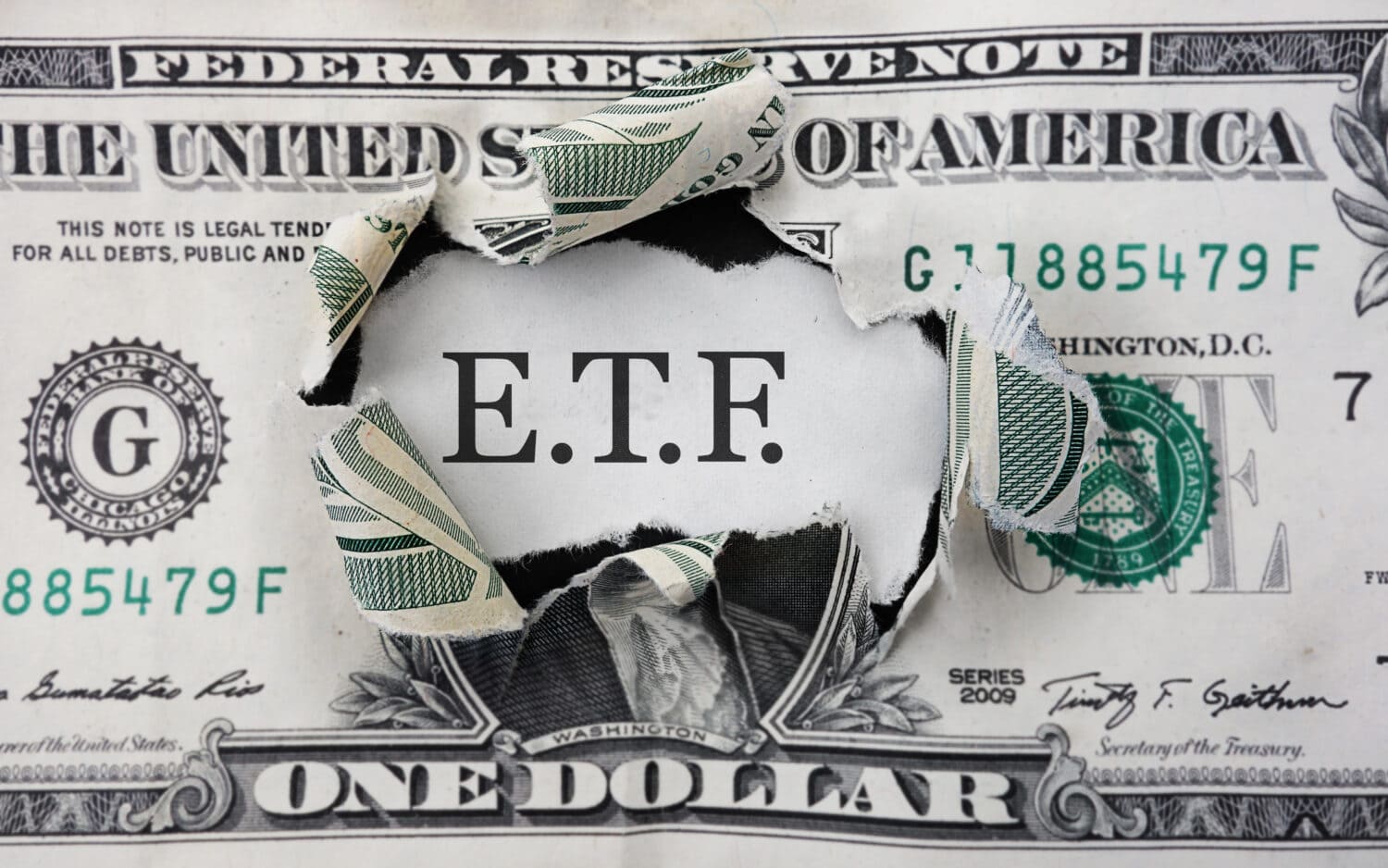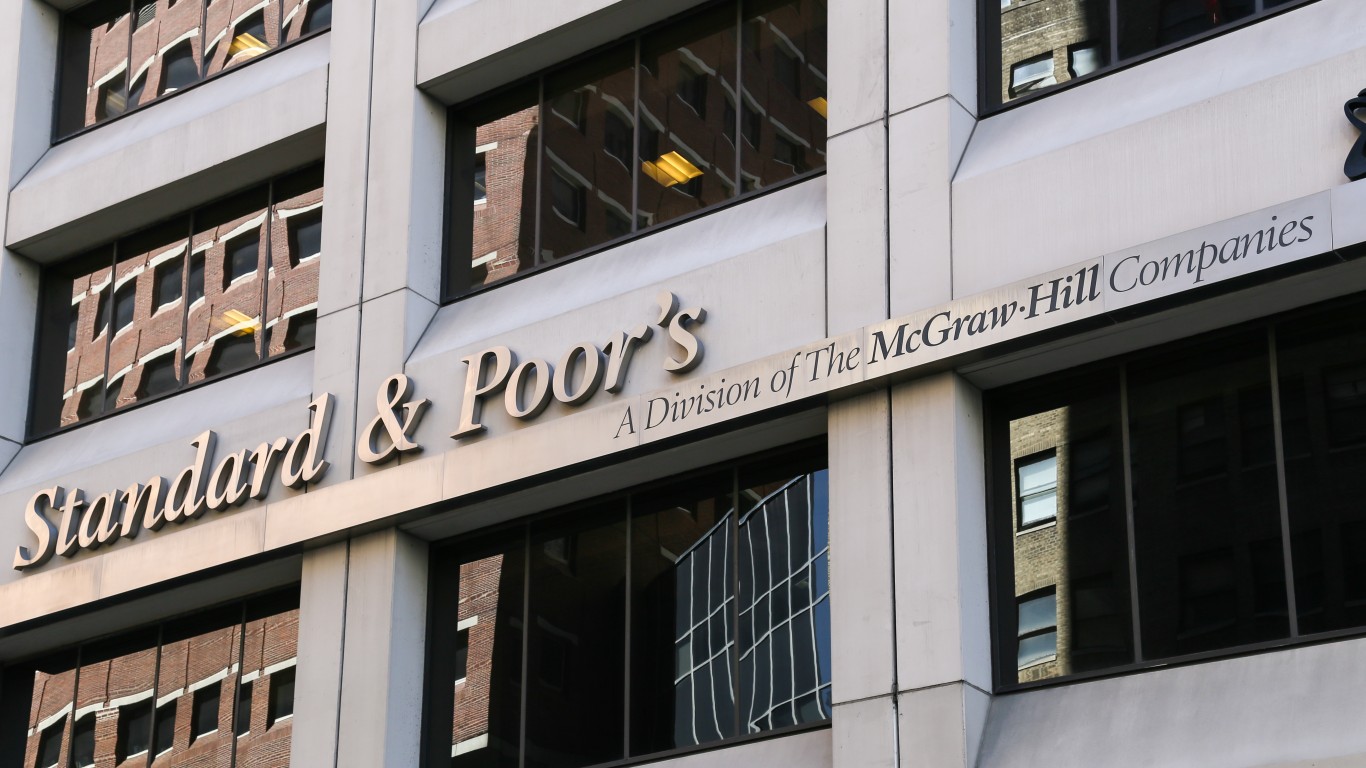
The Journal of Financial Planning and the Financial Planning Association released its “2024 Trends in Investing” report this past April, and among its findings was a bit of a surprise. Of the 208 financial planners that were surveyed, 89% of respondents said they currently use or recommend using exchange-traded funds (ETFs), making them by far the most popular investment vehicle currently available.
And according to data platform Statista, that popularity has been evidenced in the explosive growth of ETFs available in the market over the past two decades. The number of these funds now offered in the U.S. alone has grown from 123 in 2003 to 3,243 as of 2023. So with thousands of options available, how can investors — and particularly new investors — decide on which one is the right fit for their portfolios?
ETF 101


But before we dive into the top five ETFs for new investors, a review of the basics can help. We should first detail some characteristics of these types of funds and certain things prospective investors should look for before purchasing shares. ETFs are equity securities that, like mutual funds, pool investors’ money and spread it across numerous holdings. However, unlike mutual funds, ETFs are available in shares rather than minimum purchase amounts (e.g., most mutual funds require minimum initial investments between $500 and $5,000).
In that regard, ETFs are more accessible to a broad range of investors, which makes them especially appealing to novices who, by owning them, do not have to concern themselves with finding individual stocks and instead can spread their investment dollars out among a basket of holdings for broad industry or sector exposure … but without having to meet prohibitively expense minimum purchase amounts.
Actively vs. Passively Managed
Passively managed ETFs aim to mirror the returns of a benchmark index. In doing so, the holdings in a passively managed ETF reflect the holdings in that index and are only rebalanced when the index is rebalanced. Importantly, because of this, these types of ETFs do not aim to outperform indices, but rather to replicate their performances.
On the other hand, actively managed ETFs do aim to outperform a benchmark index. This involves one or more fund managers that conscientiously rebalances portfolio holdings and/or adjusts strategies on a routine and sometimes frequent basis. Because of their ability to beat the market, actively managed ETFs typically carry higher expense ratios.
Expense Ratios
The fees associated with managing an ETF are called expense ratios — a percentage that is achieved by dividing the fund’s operating expenses by its average assets. To determine this, components like administration, management, marketing costs and more are factored for. Generally, an expense ratio for an ETF is under 1%. They are higher for mutual funds, and when comparing passively managed ETFs and actively managed ETFs, the former often have lower expense ratios since their expected performance is only to mirror an index, not outperform it.
Themes
Some ETFs are themed. We will get to this later, but ETFs come in all shapes and sizes, with some funds focused specifically on certain sectors or strategies. Take, for example, Millennials, the largest age cohort in the entire world. Someone on Wall Street determined that, due to their size, that demographic is bound to have an outsized impact on consumer spending. So in May 2016, the Global X Millennial Consumer ETF (NASDAQ: MILN) debuted with the aim of mirroring Millennial’s consumer habits with holdings like Apple Inc. (NASDAQ: AAPL), Netflix Inc. (NASDAQ: NFLX) and Costco Wholesale Corp. (NASDAQ: COST).
Global X ETFs also figured out in 2010 that the world was facing a looming explosion of robotics and artificial intelligence, and subsequently launched the Global X Robotics and Artificial Intelligence ETF (NASDAQ: BOTZ). There are even ETFs that look to produce gains from the ongoing property insurance crisis in the U.S. — like the iShares US Insurance ETF (NYSE: IAK) — or that copy the investments of members of Congress — like the Unusual Whales Subversive Democratic Trading ETF (BATS: NANC) and the Unusual Whales Subversive Republican Trading ETF (BATS: KRUZ) — both of which are doing a remarkable job of either pacing (in the case of KRUZ) or beating (in the case of NANC) the market.
No. 5: SPY


Overview
- 52-week range: $409.21 – $557.18
- Expense ratio: 0.09%
- Assets under management: $544.78 billion
- Dividend yield: 1.23% paid quarterly
Having made its debut on Jan. 22, 1993, the SPDR S&P 500 ETF Trust (NYSE: SPY) is the old reliable of ETFs. Tried and true, the broad index fund is the most common investment for those looking to keep pace of the market. With $544.78 billion in assets under management (AUM), the fund became the very first ETF to reach half a trillion in AUM, achieving that mark by on February 22, 2024, exactly 31 years and one day after its inception. That, along with its historical price appreciation, is what makes the SPY the gold standard of ETF investing.
As a large-cap blended ETF that focuses both on value and growth, the SPY tracks the S&P 500 index. And since the S&P 500 is weighted, so too are the holdings for the SPY. As a result, its most dominant positions are Magnificent Seven tech companies, including Microsoft Corp. (NASDAQ: MSFT), Apple Inc., NVIDIA Corp. (NASDAQ: NVDA), Amazon.com Inc., Meta Platforms Inc. (NASDAQ: META) and Alphabet Inc. (NASDAQ: GOOGL), in order of weighting.
Since its inception in 1993, the fund gas gained nearly 1,165%, with an 84.87% gain over the past five years.
No. 4: VOO
Overview
- 52-week range: $375.95 – $512.00
- Expense ratio: 0.03%
- Assets under management: $1.19 trillion
- Dividend yield: 1.27% paid quarterly
The Vanguard S&P 500 ETF (NYSE: VOO) is another excellent option for new investors looking to buy shares of an ETF with diverse holdings with market-mirroring performance and a low expense ratio. The VOO is similar to the SPY in that it is also a large-cap blended fund that passively tracks the S&P 500. However, with a 0.03% expense ratio, the VOO charges an annual fee that is 66.66% cheaper than its SPY counterpart.
Because it tracks the S&P 500, its top holdings are identical to the SPY, with the only difference being marginal changes in the percentage of allocations to each of those top companies. As a result, the ETF’s recent performance is similar to that of the SPY. It has gained 85% over the past five years, and since its inception on Sep. 10, 2010, the VOO has climbed nearly 402%.
However, what is most notable about the VOO is its incredibly massive size. Whereas the SPY was the first ETF to reach half a trillion dollars, in just 14 years, the VOO has amassed an astounding $1.19 trillion in AUM.
No. 3: JEPI
Overview
- 52-week range: $51.38 – $57.94
- Expense ratio: 0.35%
- Assets under management: $33.53 billion
- Dividend yield: 7.98% paid monthly
While the aforementioned funds offer broad exposure and are passively managed, the JPMorgan Equity Premium Income ETF (NYSE: JEPI) is the ultimate ETF for investors who love passive income. That is because its dividend is paid monthly and yields a staggering 7.98%. How is that achieved? The fund is actively managed and employees a covered call options strategy to boost its income distributions.
That strategy is reflected in the fund’s substantial dividend yield, but also in its ability to continue trading in a tightly defined range as evidenced by its 52-week high and low. In fact, going back to the past five years, the JEPI has managed to stay within a range of $49.71 (during the COVID-19-induced market sell-off recovery) to $$63.19, making it about as predictable as an equity investment can get while continuing to provide shareholders with substantial yield.
No. 2: XLE


Overview
- 52-week range: $79.89 – $98.97
- Expense ratio: 0.09%
- Assets under management: $37.39 billion
- Dividend yield: 3.30% paid quarterly
Remember when I previously mentioned how ETFs can take on themes? Case in point: the the Energy Select Sector SPDR Fund (NYSE: XLE). The S&P 500 is partitioned into 11 sectors, of which energy is one of its most popular due to its cyclical nature. This ETF tracks the S&P 500’s energy sector.
Here is a fun fact that a lot of people are unaware of: The U.S. is the #1 producer of oil and gas on Earth. Not Saudi Arabia. Not Russia. The U.S.A. That is a title America has held for years now, and by 2025, domestic energy production is forecast to increase by an additional 1 million barrels per day, every day. For investors who keep an eye on black gold, the XLE is the answer to the question: In which passively managed ETF should I invest?
Like I recently discussed in a piece on AI stocks, sometimes an investor’s best bet is not to pick what they believe will be the individual winner in an industry or sector, but to invest in an ETF that gives their portfolio exposure to the major players in that space. For energy, that is the XLE to a tee. Rather than diving into the income statements and balance sheets of every significant company that operates in upstream, midstream and downstream energy, by investing in the XLE, you will gain exposure to 22 of the world’s largest energy producers, including the following oil majors:
- Exxon Mobil Corp. (NYSE: XOM)
- Chevron Corp. (NYSE: CVX)
- Conoco Phillips (NYSE: COP)
- Marathon Petroleum Corp. (NYSE: MPC)
- Valero Energy Corp. (NYSE: VLO)
And those are just among the fund’s top 10 holdings. So far in 2024, the S&P 500’s energy sector has seen the fifth-best performance of all 11 sectors. Looking back to the XLE’s five-year low in March 2020 — when the COVID-19 pandemic arrived and global oil demand plummeted — the ETF has gained 246.29% as of the time of writing. New investors who are big fans of the ongoing productivity of Big Oil should consider the XLE as a core component of their developing portfolios.
No. 1: QQQM
 Overview
Overview

- 52-week range: $140.84 – $205.75
- Expense ratio: 0.15%
- Assets under management: $22.72 billion
- Dividend yield: 0.63% paid quarterly
If the JEPI is the ultimate ETF for income-focused investors and the XLE is the ultimate ETF for fans of Big Oil, then the Invesco NASDAQ 100 ETF (NASDAQ: QQQM) is far and away the ultimate ETF for investors who are drawn to the enormous growth potential of tech stocks.
While many investors may be more familiar with its sister fund, the Invesco QQQ Trust Series I (NASDAQ: QQQ) — often referred to as “The Qs” — the QQQM provides nearly identical exposure at a fraction of the cost. While the QQQ charges an expense ratio of 0.20%, the QQQM charges 0.15%, or 25% less than its big sister ETF. And while that is not a significant difference in fees, there is a drastic difference is price per share for holdings that are nearly identical. At the time of writing, the QQQ is trading for $497.77, while the QQQM is trading for $204.85, a 58.84% discount for the very same portfolio holdings, which include Apple Inc, Microsoft Corp., NVIDIA Corp., Broadcom Inc. (NASDAQ: AVGO) and a litany of other information technology stocks that any investor would like to have access to via their portfolio.
Since its inception on Oct. 16, 2020, the QQQM has risen 72.87%. But in the past year alone, the ETF has gained 35.90%, 23.63% of which has come in the first seven months of the year.
The Big Takeaway
It is critically important to be aware that, with the exception of the XLE and JEPI, holding more than one of these other ETFs is going to create a considerable amount of overlap in your investments. The top holdings in each of these funds are market-weighted and therefore have a similar composition of company names and percentage allocations.
With that said, depending on your investment goals, risk tolerance and preferred management strategies, any of these five ETFs will provide long-term returns that new investors will be happy with. Just remember to conduct your own due diligence before deciding on which one (or ones) to invest in.
Are You Still Paying With a Debit Card?
The average American spends $17,274 on debit cards a year, and it’s a HUGE mistake. First, debit cards don’t have the same fraud protections as credit cards. Once your money is gone, it’s gone. But more importantly you can actually get something back from this spending every time you swipe.
Issuers are handing out wild bonuses right now. With some you can earn up to 5% back on every purchase. That’s like getting a 5% discount on everything you buy!
Our top pick is kind of hard to imagine. Not only does it pay up to 5% back, it also includes a $200 cash back reward in the first six months, a 0% intro APR, and…. $0 annual fee. It’s quite literally free money for any one that uses a card regularly. Click here to learn more!
Flywheel Publishing has partnered with CardRatings to provide coverage of credit card products. Flywheel Publishing and CardRatings may receive a commission from card issuers.
Thank you for reading! Have some feedback for us?
Contact the 24/7 Wall St. editorial team.





